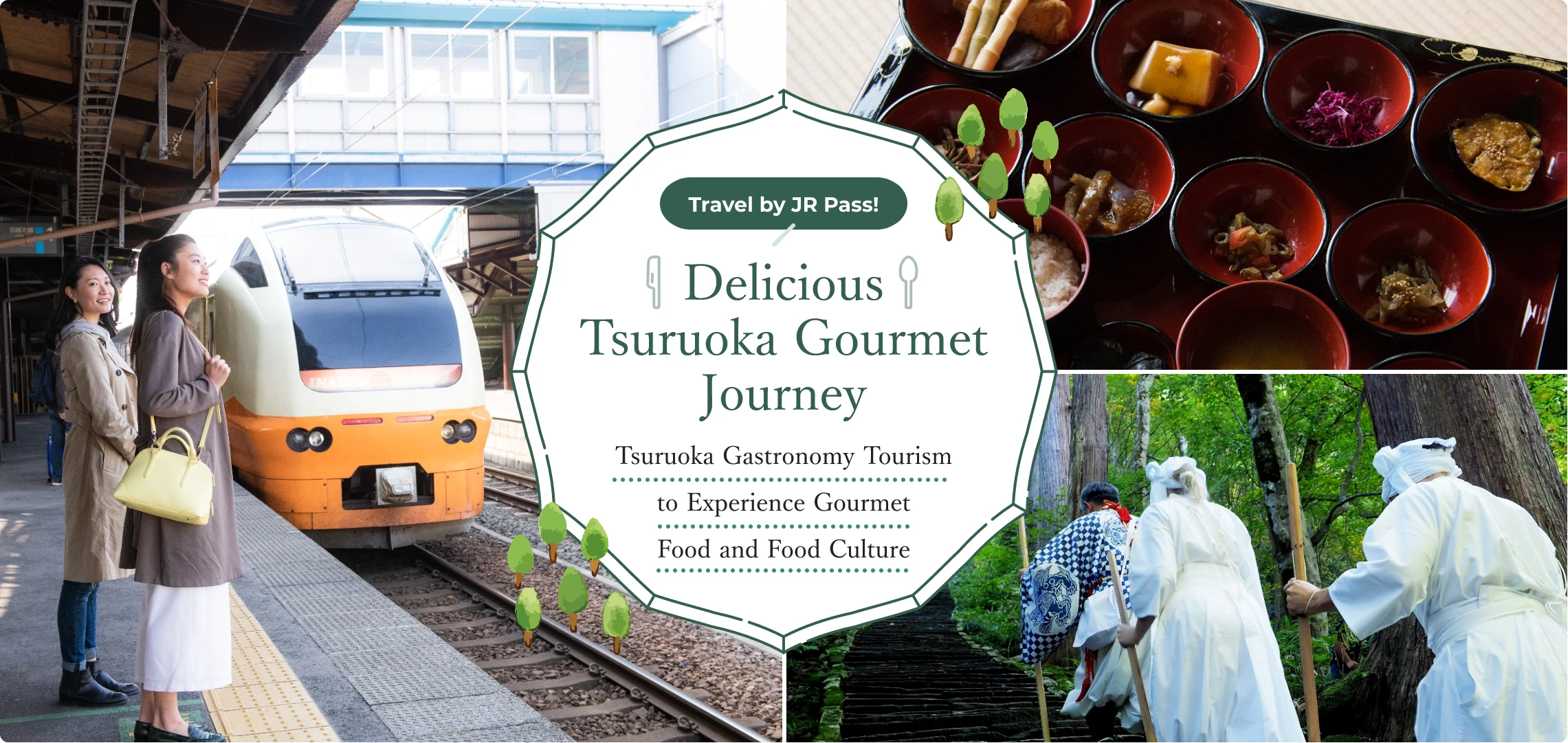
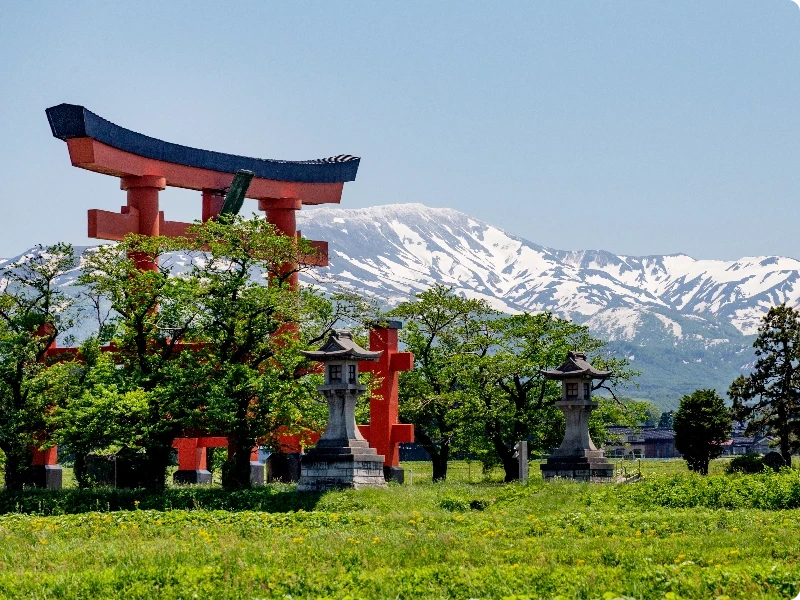
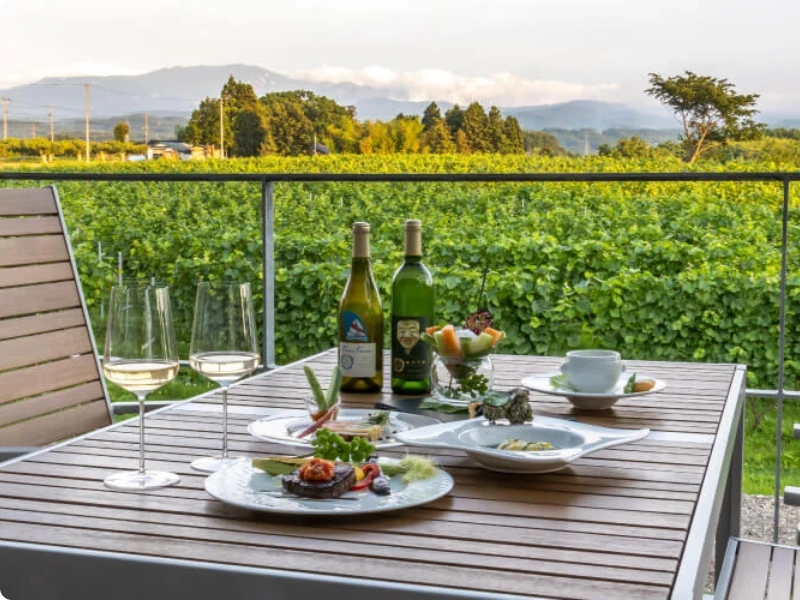
Located on the seaward side of Yamagata Prefecture in Japan's Tohoku region, the city of Tsuruoka is blessed with the rich natural landscapes of the Shonai Plain, the Sea of Japan, and surrounding mountains. Nurtured by this abundant nature, Tsuruoka's food culture has been carefully passed down for hundreds of years, and the locale has been certified as Japan's first UNESCO Creative City of Gastronomy. The shojin ryori (Buddhist vegetarian cuisine) nurtured at the Dewa Sanzan mountain shrines is known as food culture unique to Tsuruoka, where spiritual cultural values has long been cherished.
 Tsuruoka and Gastronomy Tourism
Tsuruoka and Gastronomy Tourism
"Gastronomy tourism" refers to tourism aimed at enjoying and experiencing food culture nurtures through regional ingredients, customs, traditions, and history. In Tsuruoka, you can experience for yourself a diverse range of food culture fostered in the region.
-
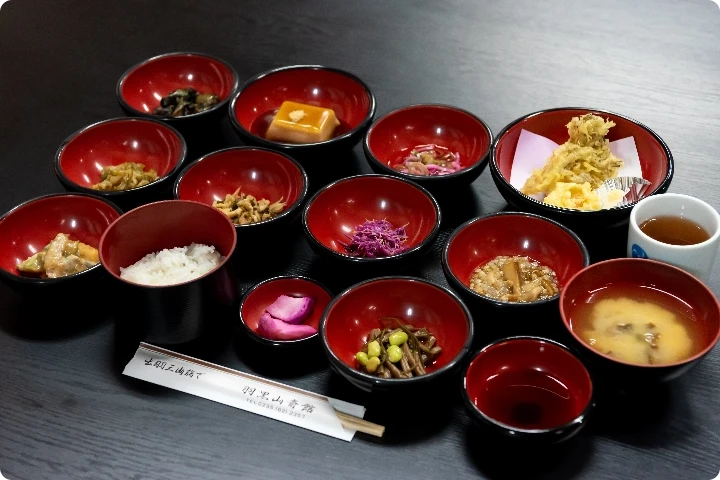
Dewa Sanzan and Shojin Ryori
There is shojin ryori developed at Dewa Sanzan and centered on mountain vegetables, and festival foods and local cuisine fostered in daily life.
-
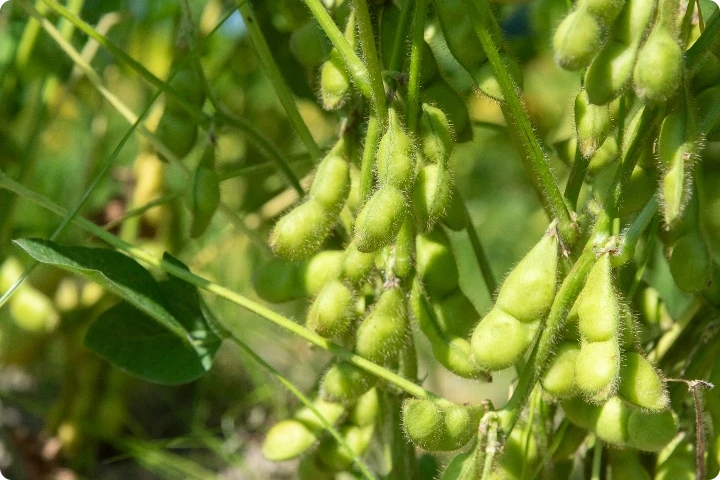
Traditional Heirloom Crops
There are 60 varieties of heirloom crops whose seeds have been handed down and produced by farming families for hundreds of years, including dadacha beans and atsumi turnips.
-
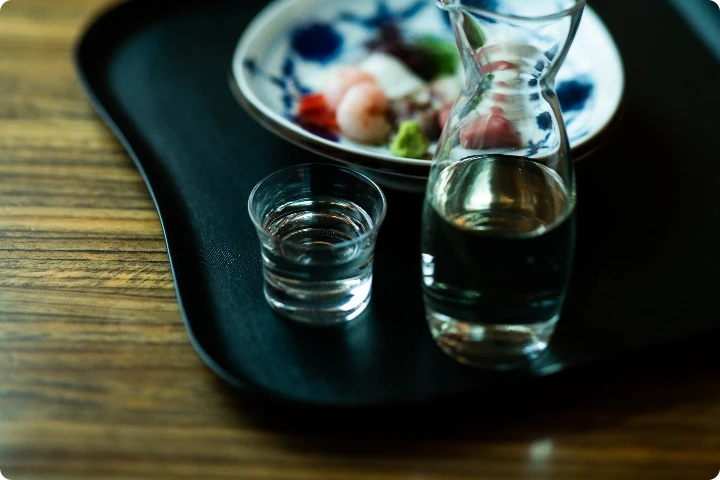
Sake Breweries and Wineries
There is Japanese sake brewed at seven breweries and wine made at wineries using locally grown grapes.
Travel to the City of Tsuruoka in Yamagata by Train and Experience Deep Japan!
Traveling to Tsuruoka from Tokyo by rail, you can get to Tsuruoka while journeying through Yamagata, Akita, Niigata, Miyagi, and other areas, allowing you to experience deep Japan.
JR Access Routes
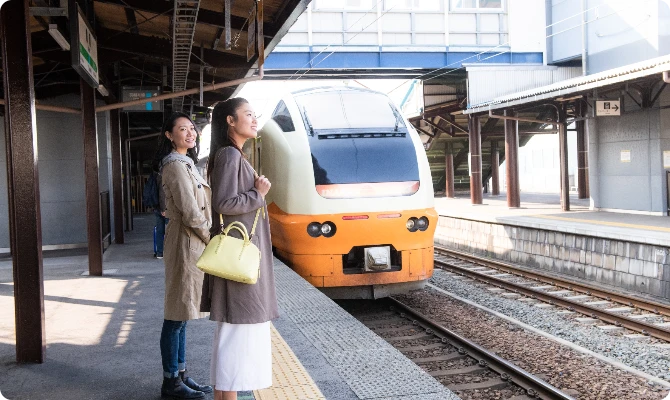
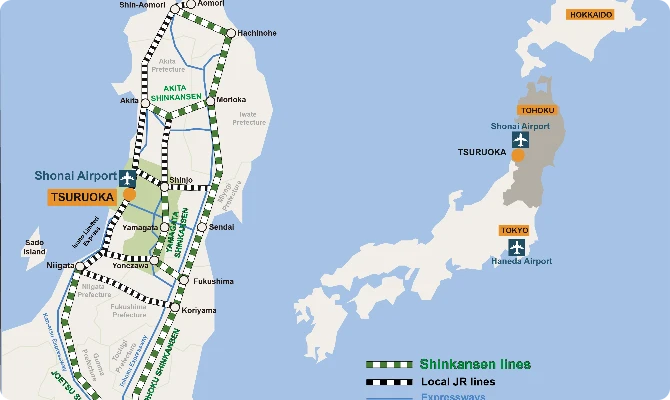
- From Tokyo to Tsuruoka via Yamagata
- From Tokyo Station to Yamagata Station by Tohoku Shinkansen bullet train in about 2 hours 40 minutes. From Yamagata Station to Tsuruoka by highway bus in about 2 hours.
- From Tokyo to Tsuruoka via Niigata
- From Tokyo Station to Niigata Station by Joetsu Shinkansen bullet train in about 2 hours. From Niigata Station to Tsuruoka Station by Inaho limited express train in about 2 hours.
- From Tokyo to Tsuruoka via Miyagi
- From Tokyo Station to Sendai Station by Tohoku Shinkansen bullet train in about 1.5 hours, and from Sendai to Tsuruoka by bus in about 3 hours.
- From Akita to Tsuruoka
- From Akita Station to Tsuruoka Station via Sakata Station by Inaho limited express in about 2 hours.
What's the Japan Rail Pass?
This is an affordable and convenient ticket for traveling throughout Japan by rail. There is a Green Car version and ordinary car version, with passes for 7, 14, or 21 days.
For details, check here All Roads Lead to Dewa: the Route for the Land of Dewa, Journey to Tsuruoka
All Roads Lead to Dewa: the Route for the Land of Dewa, Journey to Tsuruoka
The journey around Mount Gassan, Mount Haguro, and Mount Yudono, with a history dating back 1,400 years, was popular among common people around 200 years ago, and was known as the "Dewa Sanzan pilgrimage." Pilgrims from various regions of Japan, including Tohoku and Kanto, walked the route, visiting famous temples and shrines, aiming for the Land of Dewa where Dewa Sanzan ("the three mountains of Dewa") is located.
Pilgrims would eat shojin ryori, cuisine made from wild mountain vegetables, before ascending the mountains. After descending, they would soak in hot springs associated with Dewa Sanzan, enjoying local sake, seasonal harvest bounty, and catch from the sea. The Tsuruoka gastronomy journey is a traditional cultural experience in Dewa, Yamagata Prefecture's city of Tsuruoka, rooted in such history and still passed down today.
-
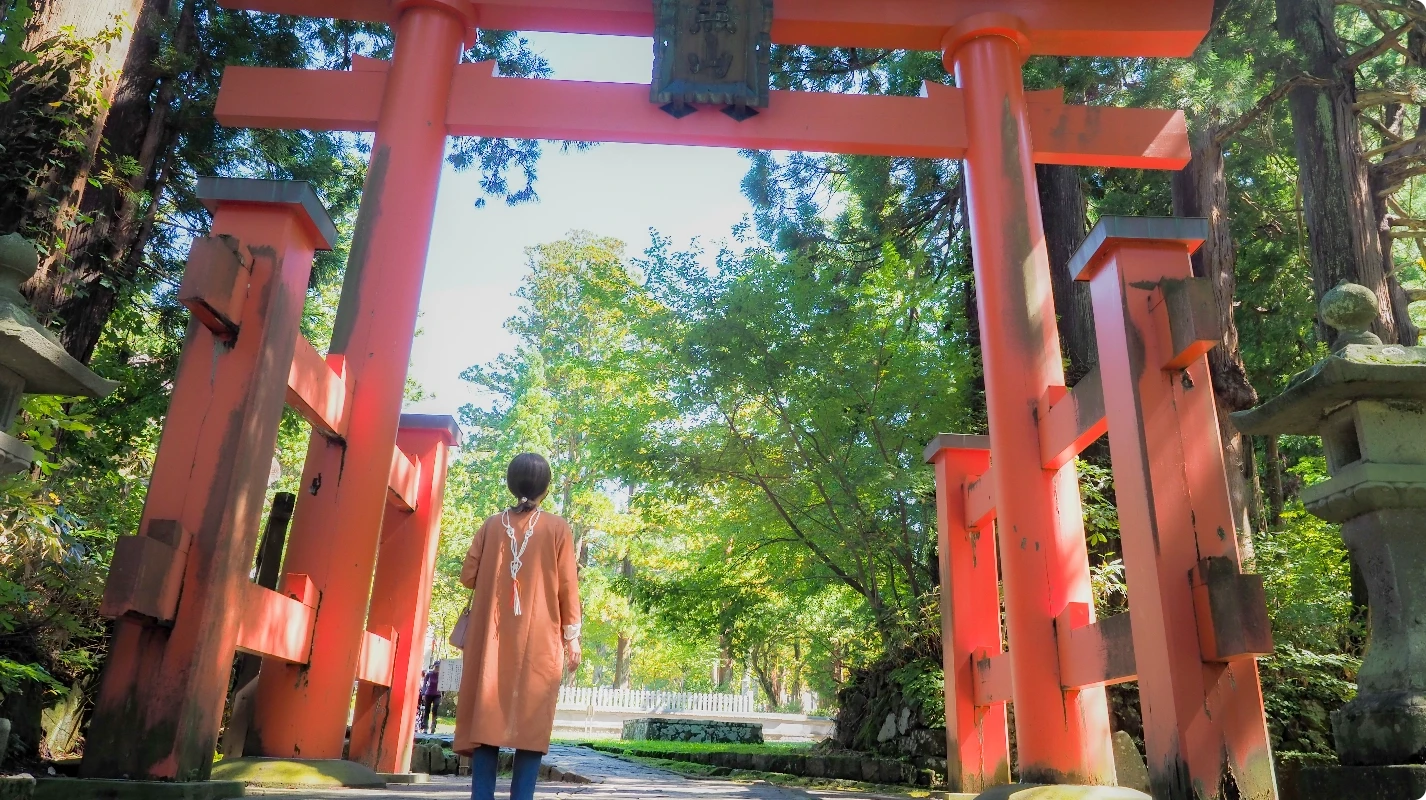
Pilgrimage
The Dewa Sanzan shrines celebrating the deities of Dewa SanzanWalk the mystical cedar-lined path of the ishidan stone-step pilgrimage, rated three stars in the Michelin Green Guide JapanWalk with Yamabushi – Journey to Rebirth: Dewa Sanzan Shonai Jinja Shrine, enshrining successive past Sakai clan lords of the Shonai domainRyutakusan Zenpoji Temple, with over 1,100 years of history as "the dragon deity of the sea" -
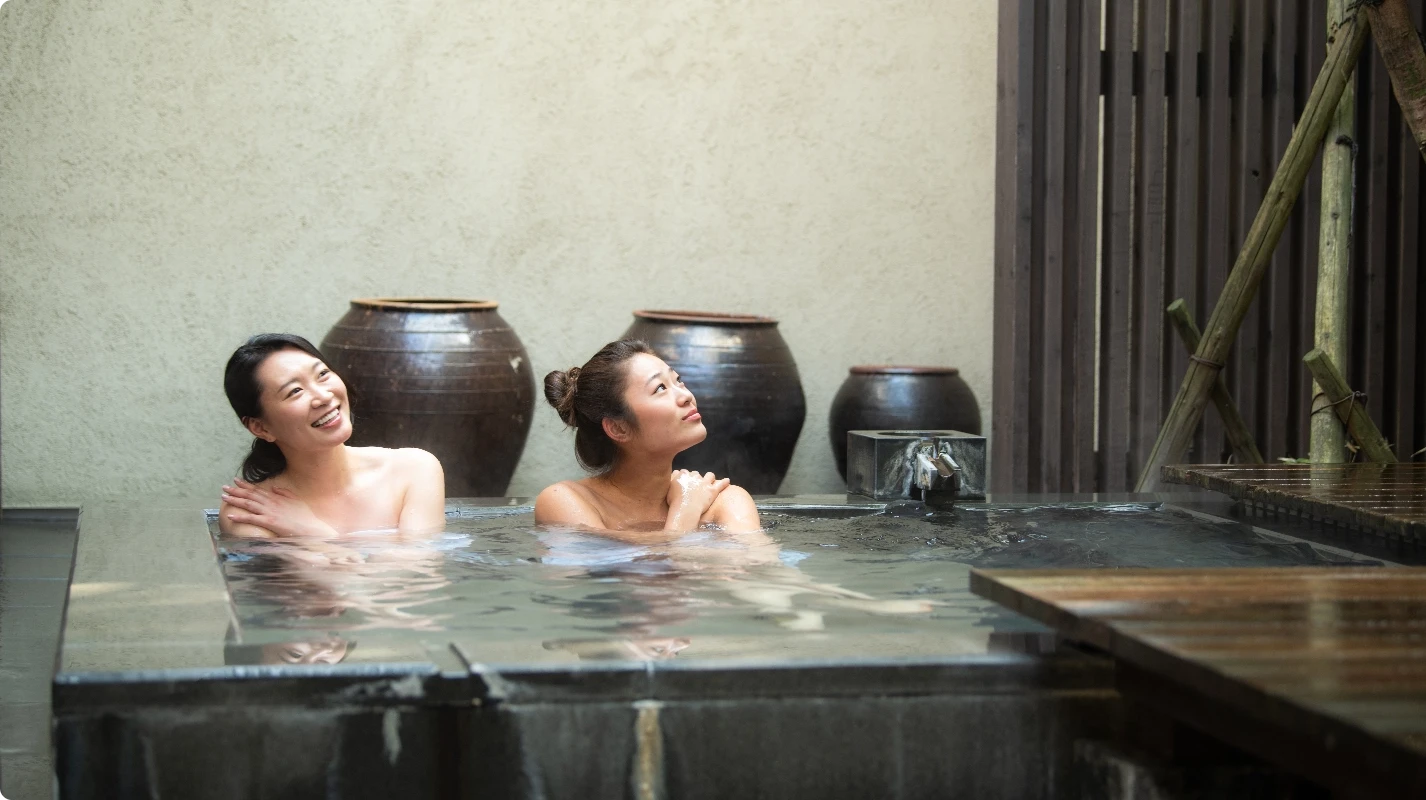
Onsen Hot Springs
The city of Tsuruoka is a "bath town" dotted with onsen hot springs large and small. Yunohama Onsen, Atsumi Onsen, Yudagawa Onsen and Yura Onsen are four scenic coastal and secluded mountain hot springs. Urban onsen hot springs also offer convenient access.
Onsen Hot Springs -
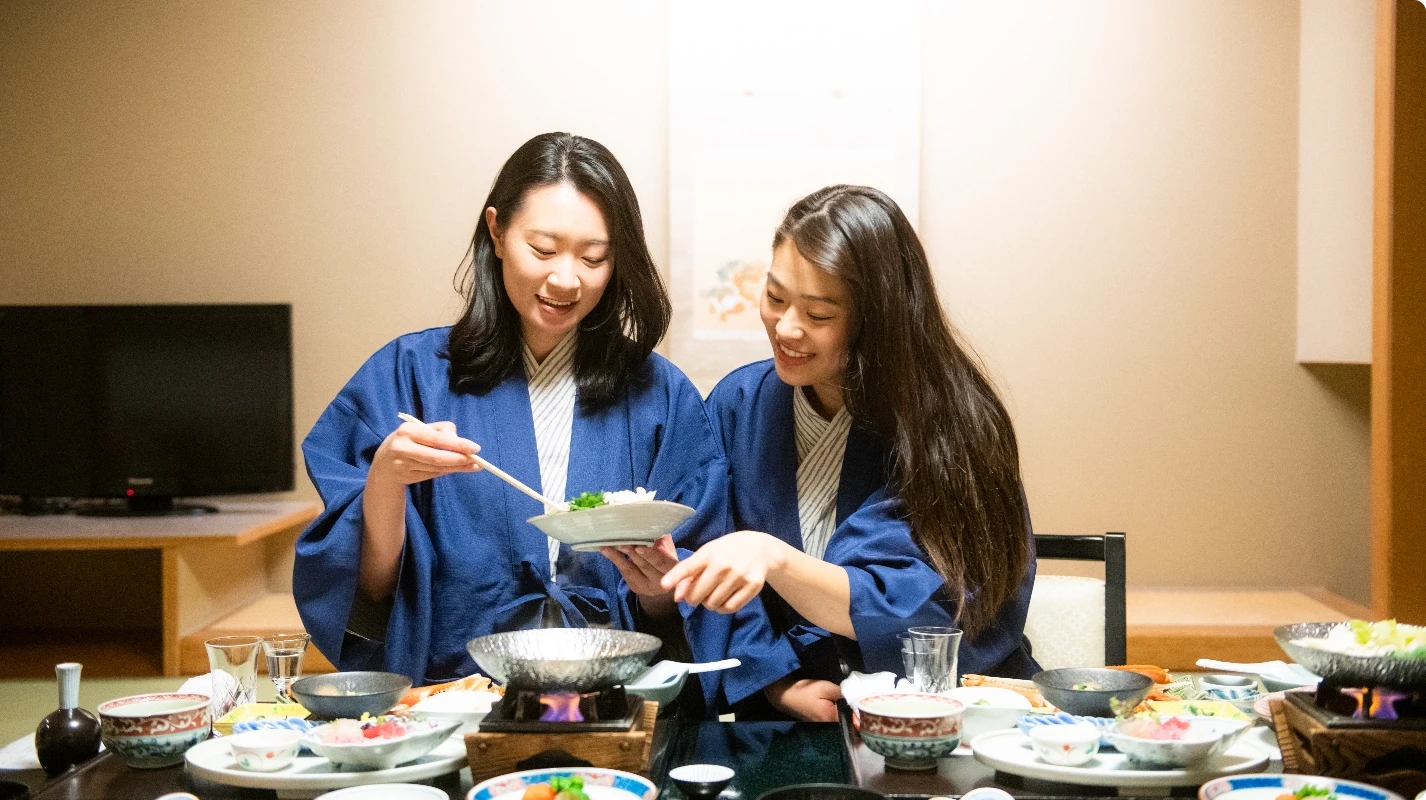
Dining
The Shonai Plain, mountains, countryside, rivers, and sea provide abundant bounties. There are seasonal delights to enjoy, from traditional cuisine to creative fare showcasing the individual flair of ryokan inns.
Dining -
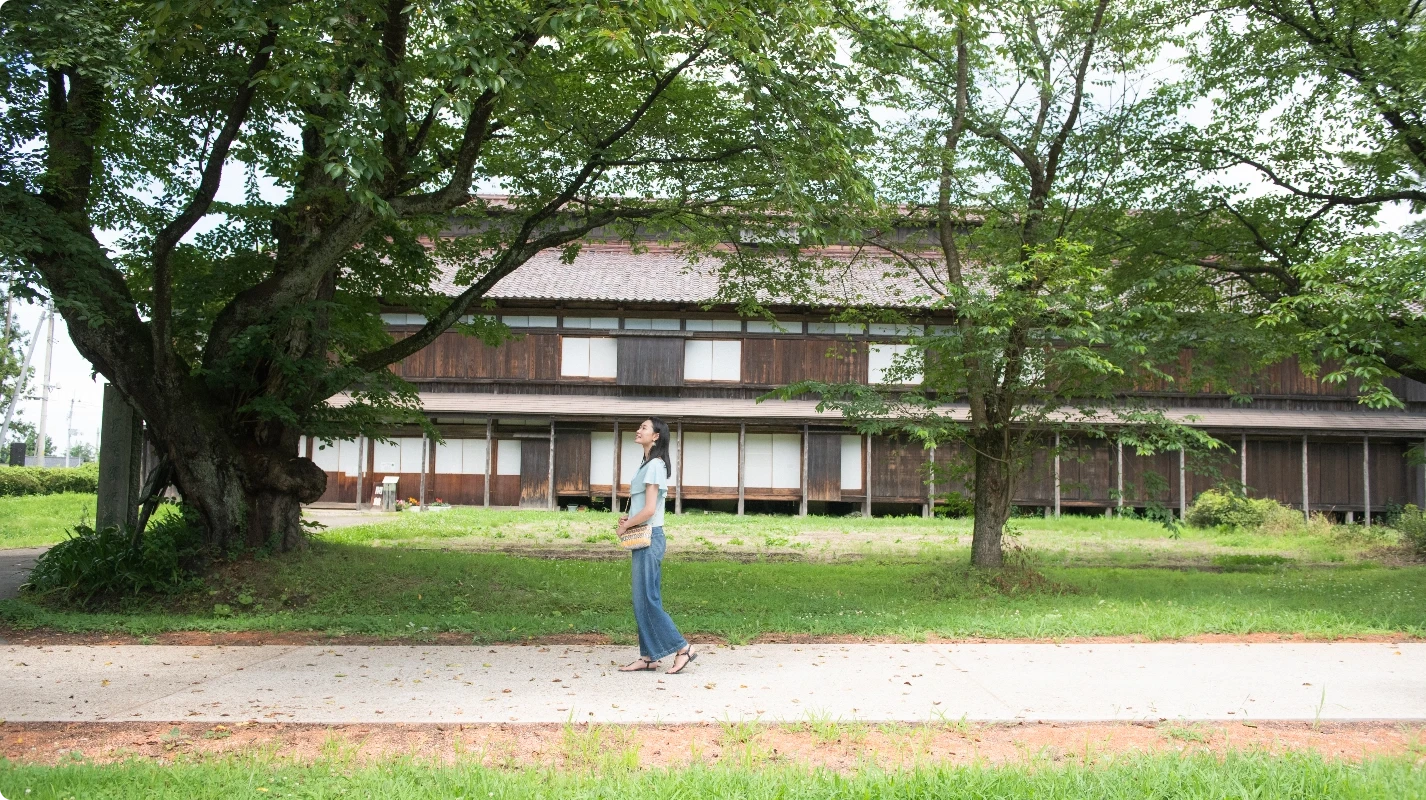
Feel History and Culture
Tsuruoka has the history and culture of the era of feudal lords, and retains vestiges of its past as a castle town.
Matsugaoka Reclamation Site
Chido Museum
 Tsuruoka Seasonal Cuisine
Tsuruoka Seasonal Cuisine
-
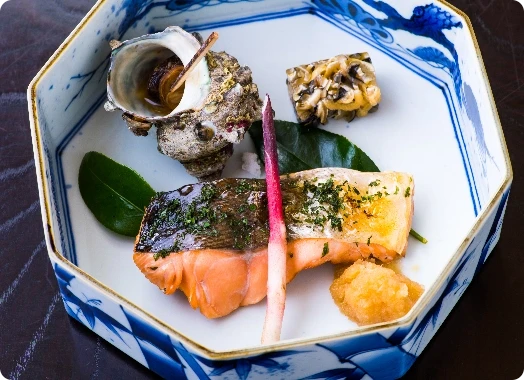
Spring
Sea bream, cherry trout, and other fish come in season, along with native spring mountain vegetables such as moso bamboo shoots.
-
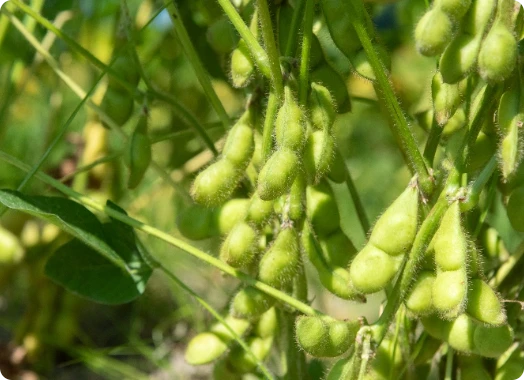
Summer
Flourishing in summer are seasonal vegetables such as dadacha beans and eggplant, rock oysters and other seafood, and melon, grapes, and other fruit! You can also enjoy picking cherries yourself.
-
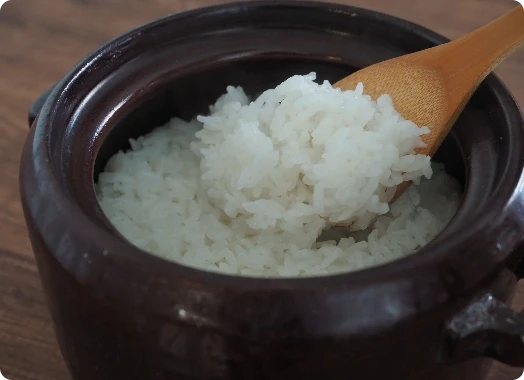
Autumn
This is the tasty season for new-harvest Tsuyahime and other varieties of Shonai rice. Also in season are Atsumi turnips, Shonai persimmons, and other treats.
-
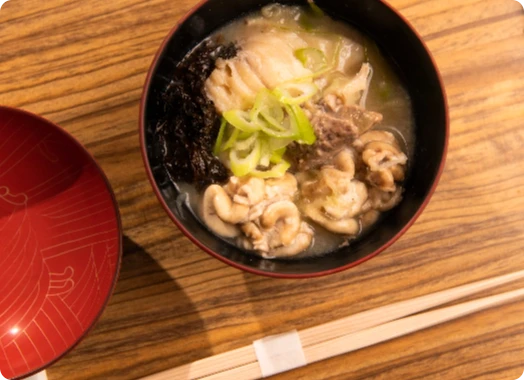
Winter
This is the season for fish such as sandfish and cod, along with daikon radishes and turnips. Shonai-style potato stew and kandarajiru – black cod soup – are winter highlights.
Where to Enjoy Tsuruoka Cuisine and Culture
Tsuruoka cuisine, cultivated by history and culture, is delicious. Vegetable-based Buddhist shojin ryori is also recommended for vegetarians.
-
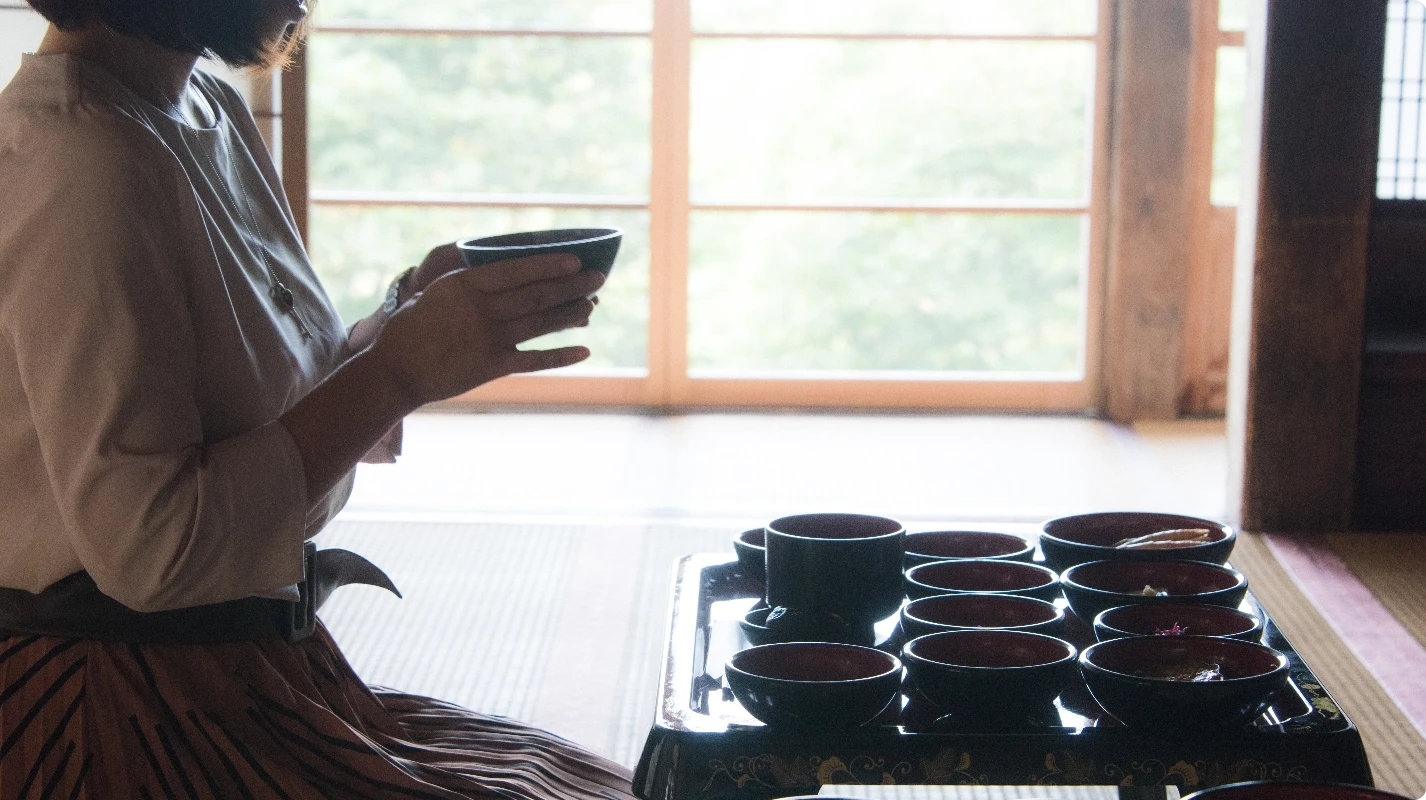
Shrines and Temples
Although these are sites for paying respect to deities and the Buddha, their resting lodges also offer vegetarian shojin ryori meals to the general public. At these places you can enjoy a cleansing experience for both body and soul.
-
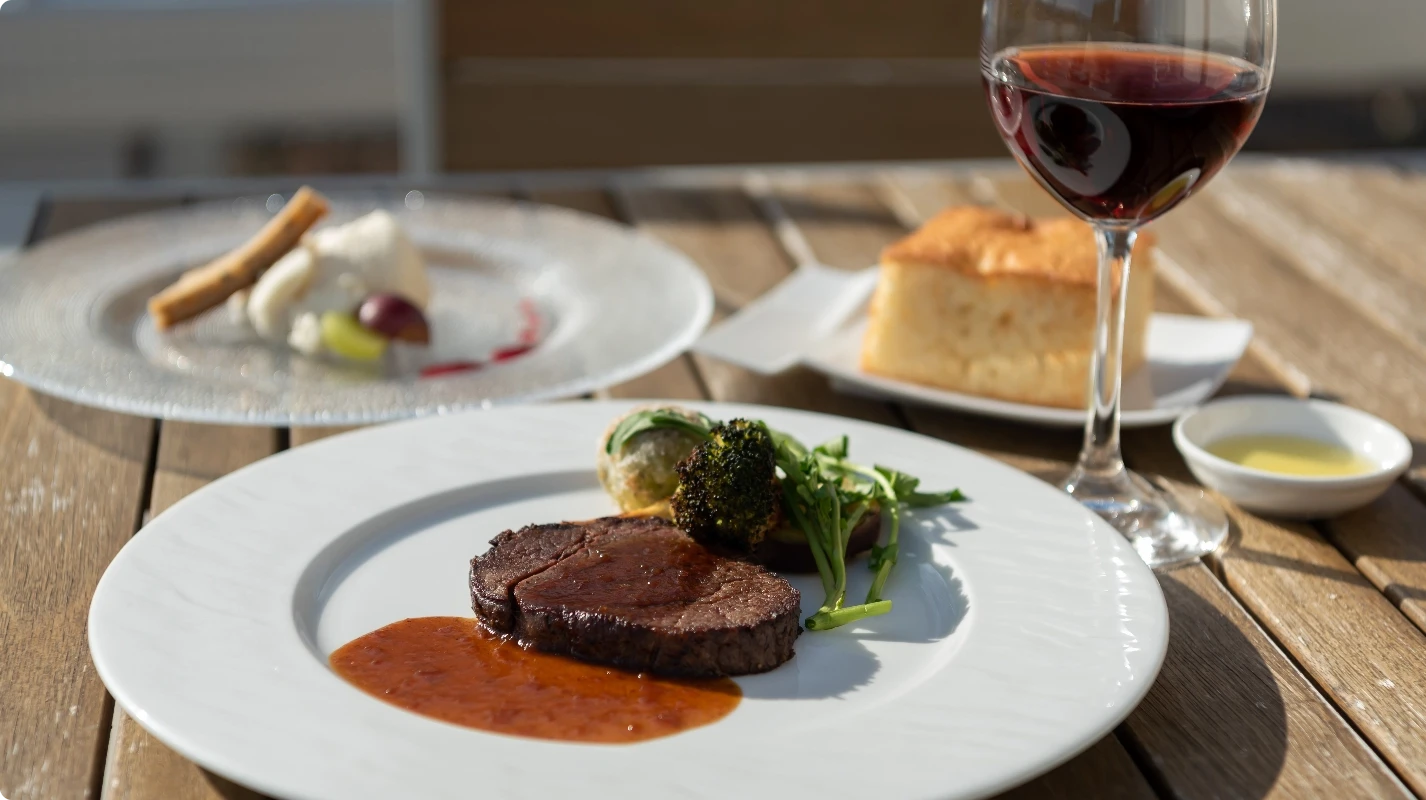
City Restaurants
You can enjoy Italian, French, and other styles of meals with seasonal ingredients. The wines at restaurants with wineries are also recommended. Some eateries place emphasis on vegetables and cater to vegetarian diners.
-
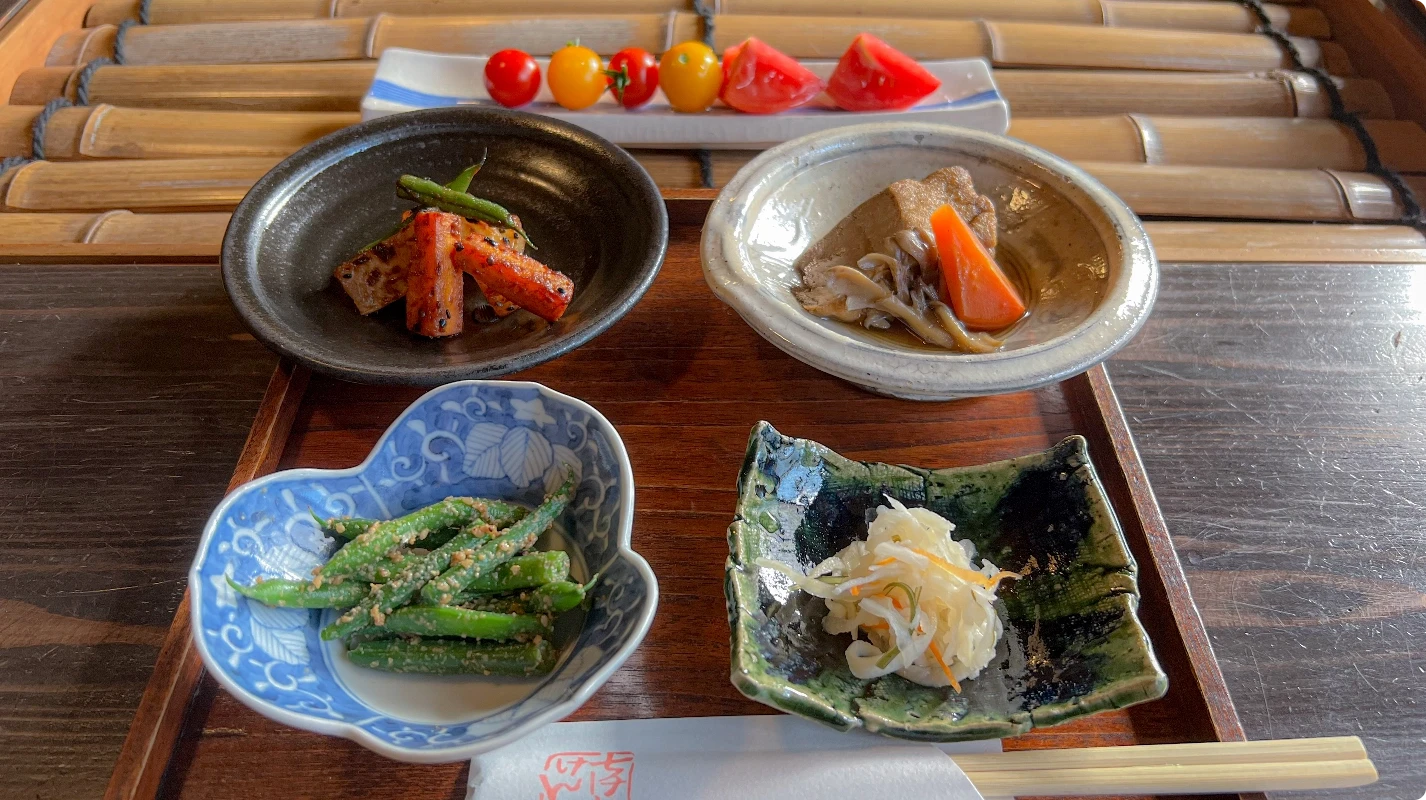
Farmhouse Restaurants
Enjoy seasonal vegetables straight from nearby farms and local home cooking amidst bucolic scenery.
-
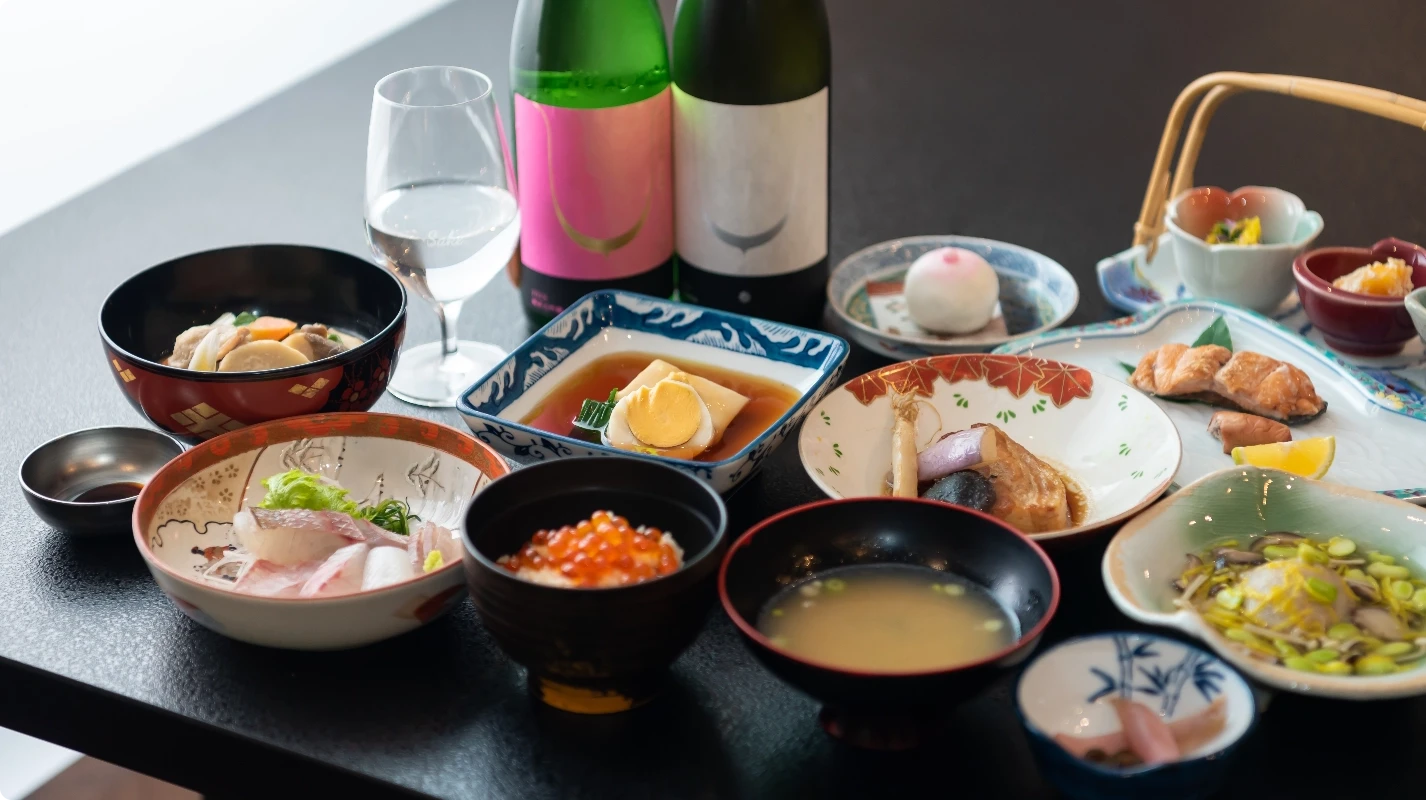
Onsen Hot-spring Inns
Onsen inns uniquely showcase local ingredients, traditional cuisine, and creative flair. Hot-spring retreats offer seasonal flavors, local sake, and gourmet food and drink.
Experience Tsuruoka's Food and Culture!
3-day, 2-night Tsuruoka Gastronomy Tourism
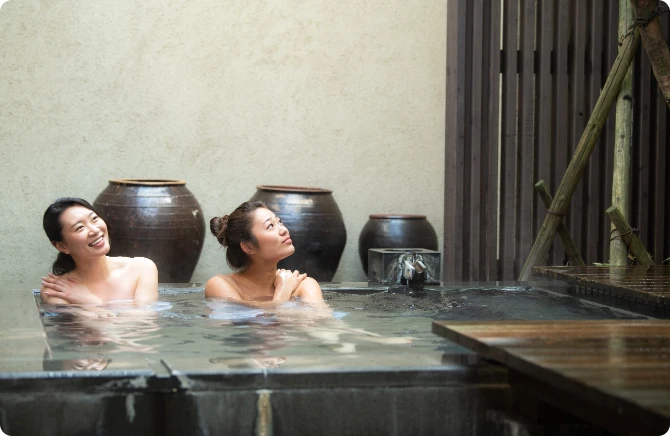
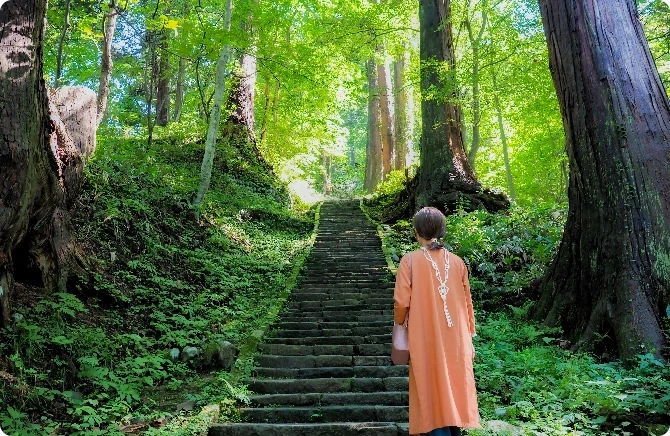
-
Day 1
Tsuruoka Station → Ishidan Stone-step Pilgrimage → Saikan → Yudagawa Onsen
-
Day 2
City Stroll → Zenpoji Temple → Yunohama Onsen
-
Day 3
Kamo Aquarium → Dewanoyuki Sake Brewery → Shonai Jinja Shrine
The FŪDO Guide Will Lead the Way
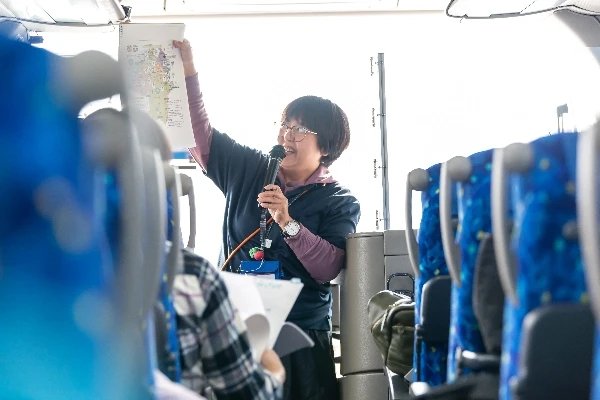
The Tsuruoka FŪDO Guide communicates the appeal of the city's cuisine. It accompanies tours and events, sharing stories about Tsuruoka's history and food culture, conveying the voices of producers, and engaging in a range of activities.
For details, check hereGASTRONOMYTOPICS
Gastronomy TourismGlossary
- Gastronomy
- Gastronomy is a term that refers to the enjoyment of high-quality food and culinary culture. It encompasses the art and science of cooking, the quality and preparation of ingredients, and regional culinary traditions. In gastronomy, food is considered a source of nourishment and an essential element of comfort and enjoyment. It allows us to explore great restaurants and local culinary traditions and enjoy new taste discoveries. Additionally, there is a more advanced form of gastronomy known as "molecular gastronomy," which involves an artistic and scientific analysis of the quality of ingredients and cuisine. With its wide range of dining experiences, gastronomy generates new surprises and satisfaction for foodies and tourists worldwide.
- Gastronomy Tourism
- Gastronomy Tourism is a type of tourism that focuses on food and culinary culture. It aims to provide tourists with an opportunity to enjoy the local food culture, including the ingredients, customs, traditions, and history behind the food. The primary objective of this form of tourism is to experience all food-related activities, such as trying local dishes, interacting with chefs, and experiencing unique regional cuisine. It emphasizes on dining experiences and provides a chance to explore distinctive regional ingredients, restaurants, culinary experiences, and food culture.
- UNESCO Creative Cities of Gastronomy
- UNESCO Creative Cities of Gastronomy refers to cities that have been given special recognition by the United Nations Educational, Scientific and Cultural Organization (UNESCO). These cities aim to preserve, promote, and develop culinary cultures, and encourage international culinary diversity and creativity. The UNESCO Cities for Creative Cities for Food Culture is a global network of cities that share similar titles, created by UNESCO in 2004. They collaborate to exchange information and facilitate joint projects related to food culture, allowing for knowledge sharing and best practices. Tsuruoka City was certified as a member of this network on December 1, 2014, and became the first "UNESCO City of Food Culture Creation" in Japan, focusing on food culture.
- How can I experience Gastronomy Tourism?
- Gastronomy is an experience that can mainly be enjoyed in bars, restaurants, pubs, and other eating establishments of tourist destinations. Bars offer local snacks and opportunities for bar-hopping. Restaurants offer fine cuisine and traditional dishes that are prepared by local chefs. On the other hand, pubs are places where you can mingle with the local culture and enjoy local beer and pub food, all within an intimate atmosphere. These eating and drinking establishments have become a magnet for gastronomy enthusiasts and tourists alike, who come to discover new tastes and dining experiences.
